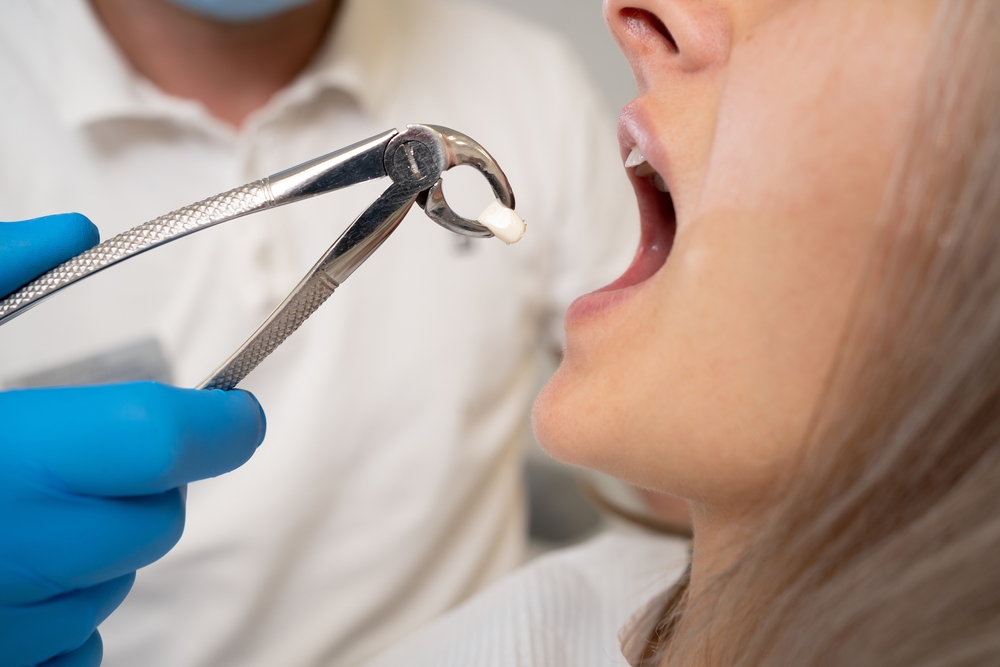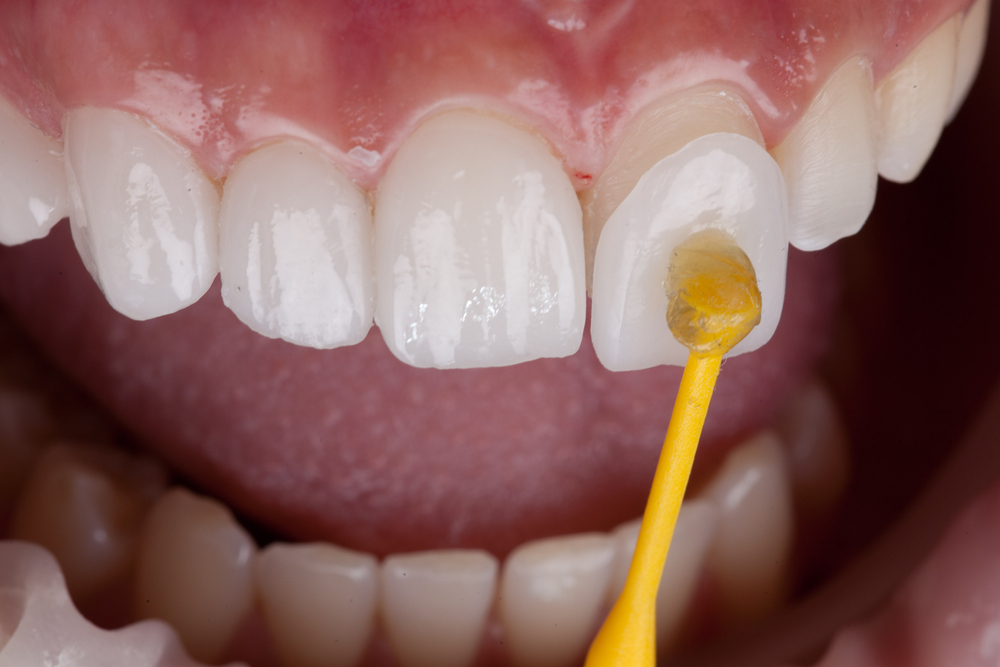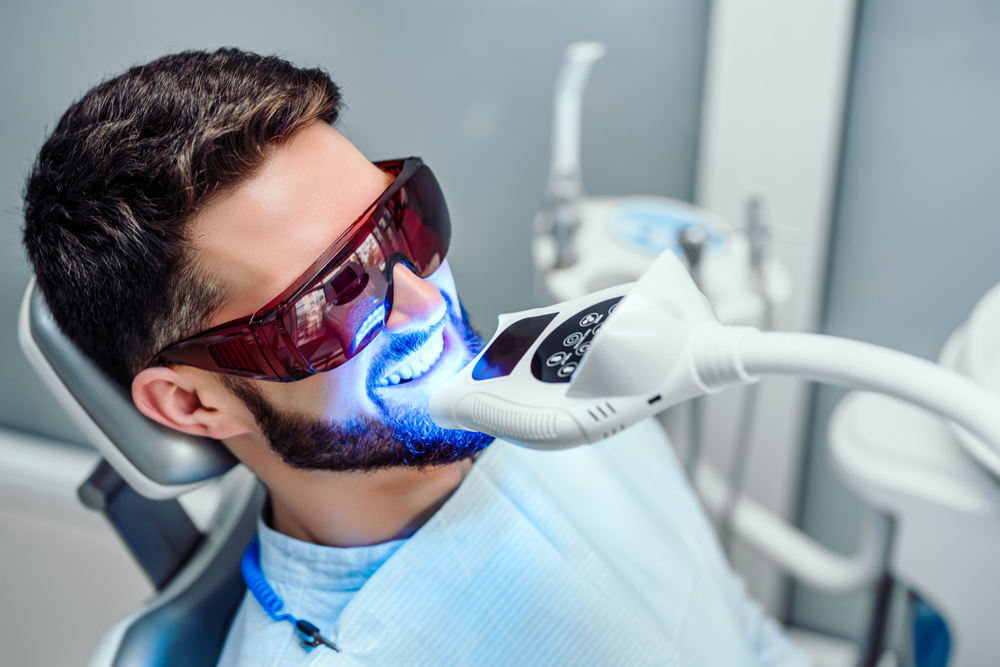Life can be unpredictable. Think about it. How many times have you accidentally bumped into something, or maybe bitten into an unexpectedly hard piece of candy? In moments like these, teeth can break, even if they’re strong and healthy. But it’s not just about a minor flaw in your smile.
A broken tooth can become a doorway for bacteria to enter and cause infections. It might begin with a sharp pain when you sip your morning coffee or a throbbing sensation that keeps you up at night. Sometimes, it’s like a tiny electric jolt every time cold air brushes past your mouth. These are signs of sensitivity and potential nerve exposure, which, trust me, you don’t want to ignore.
But let’s not just focus on the pain. From a visual standpoint, a broken tooth can affect your self-confidence. Picture this: you’re laughing with friends or posing for a photo, but you’re hesitant to show your teeth. It’s hard to feel your best when a piece of your smile is missing or damaged.
The Importance of Seeking Professional Treatment

I get it. In today’s age of YouTube tutorials and DIY blogs, the urge to search “how to remove a broken tooth” or “fix a chipped tooth at home” can be strong. Why wait for a dentist’s appointment, and spend the money, when a quick internet search promises an immediate solution, right? Well, unfortunately, it’s not that simple.
Firstly, our teeth aren’t like a regular DIY project. They’re delicate, complex structures. Imagine trying to mend a broken porcelain vase with regular glue. It might look alright from afar, but it won’t hold water, and you risk it breaking again, perhaps even worse than before.
Similarly, while some DIY solutions might give the illusion of a “fixed” tooth, they don’t address underlying issues. There could be cracks that are invisible to the naked eye or damage deeper within that only professional equipment can detect.
Dentists go through years of training to handle situations like these. They have specialized tools and, most importantly, the expertise to know which treatment is best suited for every type of break or crack. Attempting to fix a broken tooth at home is akin to putting a band-aid on a wound that really needs stitches. It might cover up the problem temporarily, but without proper treatment, complications can arise.
So, before going down the rabbit hole of home remedies and DIY fixes, remember the value of professional care. After all, it’s your beautiful smile we’re talking about, and it deserves the best treatment available.
Types of Broken Teeth
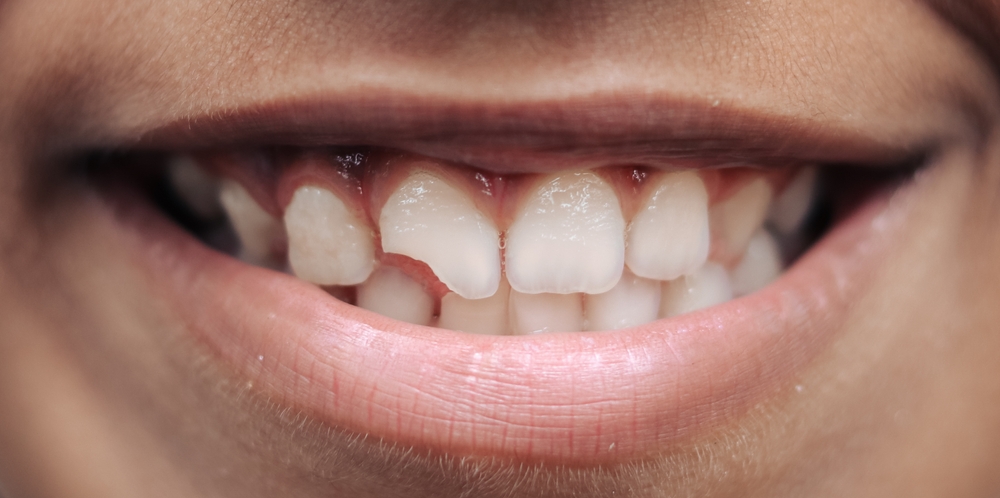
Different Types of Breaks and Their Complications
Our teeth, as strong and resilient as they are, are not invincible. They can suffer a range of damages, and understanding these can help you gauge the severity and type of care you might need.
- Cracked Tooth: This refers to a crack running from the biting surface of the tooth downwards towards the root. It might not split the tooth into parts, but it can cause pain and, if not treated, can spread and worsen.
- Chipped Tooth: This is probably what most people think of with minor dental injuries. It’s a small piece of the tooth that has broken off. If it’s minor, it might not hurt, but it can be a cosmetic concern. Major chips can affect deeper layers of the tooth, leading to pain or sensitivity.
- Broken Tooth: This can range from a minor break that affects only a portion of the tooth to a significant break where the tooth breaks off entirely, often exposing the nerve. This can be painful and might bleed.
- Split Tooth: This is what happens when a cracked tooth goes untreated. The crack deepens and splits the tooth into two segments. It’s painful and can often lead to the tooth being lost if not promptly addressed.
With each type of break, there’s a risk of complications. An untreated crack or break can lead to infections as bacteria can enter the inner parts of the tooth. This can also lead to gum disease, abscesses, or even loss of the tooth.
The Significance of Location: Front Teeth vs. Wisdom Teeth
Location, location, location! It’s not just a mantra for real estate; it matters in the dental world too.
- Front Teeth: These are the stars of your smile, the first thing people notice when you talk or laugh. A broken front tooth can be a significant cosmetic concern. Functionally, we use our front teeth for biting into food, so any damage here can affect your eating habits. There’s also the psychological impact; feeling self-conscious about a broken front tooth can dampen your spirits.
- Wisdom Teeth: These third molars at the very back of the mouth have a reputation for being troublemakers. Since they’re the last to emerge, often in our late teens or twenties, there’s not always enough room for them. This can lead to them being impacted or coming in at an odd angle. When a wisdom tooth breaks, its location makes it harder to clean, increasing the risk of decay and gum disease. Broken wisdom teeth removal is a procedure that requires expertise because of the tooth’s tricky position in the mouth.
In both cases, whether it’s the visible front tooth or the hidden wisdom tooth, professional intervention ensures the damage doesn’t lead to more significant problems down the line.
Professional Treatment for Broken Teeth

How are Broken Teeth Extracted?
Let’s start by busting a common myth. Extraction isn’t always the first option! Dentists evaluate the severity and type of break, and if the tooth can be saved, they opt for other treatments. But in cases where extraction becomes necessary, it’s a lot more advanced and less daunting than what you’d imagine from old tales or movies.
After ensuring the area is completely numb with local anesthesia (so you won’t feel a thing), dentists proceed with the extraction. They might gently wiggle the tooth back and forth to loosen it from the jaw bone and ligaments holding it in place. It’s not about brute force, but precision and care. Once it’s loose enough, they’ll use tools to pull it out.
How do Dentists Pull Broken Teeth?
So, if you’re wondering how dentists pull broken teeth, the answer lies in their toolkit and expertise. The main tools at their disposal are dental forceps and elevators.
- Dental Forceps: These look a bit like pliers and are used to grip the tooth. The dentist then applies a steady pressure to pull the tooth out.
- Elevators: Think of these as little dental crowbars. They’re used to wedge between the tooth and the surrounding bone, helping to lift the tooth or make it loose.
The method ensures the tooth is removed safely, causing minimal trauma to the surrounding area. This, in turn, means a faster and more comfortable healing process for you.
Broken Wisdom Teeth Removal
When it comes to broken wisdom teeth removal, the process can be a tad more involved. The back of the mouth is a tight space to work in. Plus, wisdom teeth can sometimes be impacted, meaning they haven’t fully emerged from the gums. This, combined with their often twisted roots, means that removing them requires extra care.
Your dentist might make a small incision in the gums to access the tooth, and in some cases, might break the tooth into smaller pieces to make extraction easier. This sounds intense, but with anesthesia and the expertise of your dentist, it’s manageable and far better than living with the potential pain or complications of a problematic wisdom tooth.
How do Dentists Fix Broken Front Teeth?
Now, if your front tooth is broken but not beyond repair, there are cosmetic solutions to bring back your smile.
- Veneers: These are thin shells, usually made of porcelain, that are custom-made to fit over the front surface of your tooth. They look natural, and once in place, it’s hard to tell there was ever a break.
- Dental Bonding: This is like artistry for dentists. They use a tooth-colored composite resin to “build” the broken part of the tooth. It’s sculpted to match the natural shape of your tooth, hardened with a special light, and then polished.
Both of these methods restore not just the appearance but also the function of the tooth, ensuring you can bite, chew, and smile with confidence.
Challenges with Extracting Broken Teeth

Are Broken Teeth Harder to Extract?
In the world of dentistry, no two teeth or situations are exactly alike. When it comes to the question, “Are broken teeth harder to extract?”, the answer is—it depends. If a tooth has broken cleanly, it can sometimes be simpler to extract because there’s a clear point from which the dentist can work.
On the other hand, a tooth that’s shattered into multiple fragments or one that’s broken below the gum line can be more challenging. The reason? It’s like trying to pick up pieces of a puzzle as opposed to lifting a whole object. The dentist needs to ensure that all fragments are removed to prevent complications.
Furthermore, teeth that are broken might have splintered roots or could be in a position that makes them harder to access. All these factors make the extraction process more intricate, requiring the steady hands and expert vision of a seasoned professional.
Risks Associated with Delaying Treatment
It’s easy to think, “Oh, it’s just a small crack, it doesn’t hurt much. I’ll deal with it later.” But delaying treatment for a broken tooth isn’t something you’d want to put on the back burner. Here’s why:
- Infection Risk: The mouth is a hub for bacteria. A broken tooth can expose the inner layers, including the pulp, making it vulnerable to infection. An untreated infection can then turn into an abscess, which is a pocket of pus that can be both painful and dangerous.
- Increasing Pain: What starts as a slight discomfort can turn into unbearable pain if the tooth damage worsens or becomes infected.
- Damage Spread: If not treated, the break can expand, causing more of the tooth to become damaged or leading the tooth to break further.
- Health Complications: An untreated tooth infection doesn’t just stay in the mouth. It can spread to other parts of the body, potentially leading to more severe health issues.
- Costly Repairs: What might be a simple fix now can turn into a more extensive, and expensive, treatment later on.
Remember, our teeth might be small, but they play a significant role in our overall health. That minor crack or chip isn’t just a cosmetic issue—it’s a ticking time bomb for potential health challenges. The smart move? Address it sooner rather than later.
DIY Tooth Repair: Warnings and Recommendations
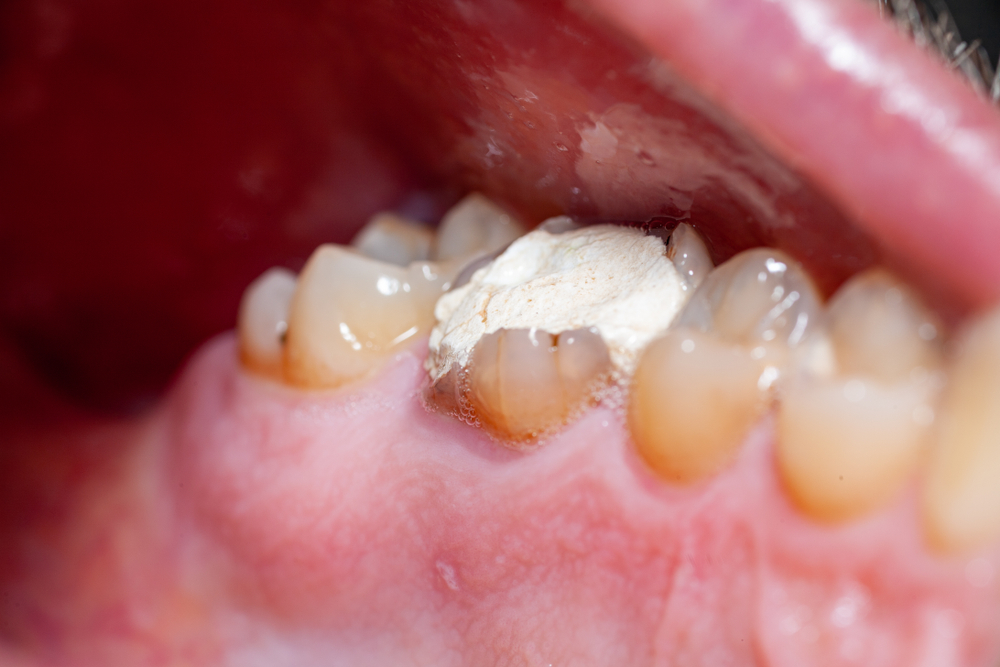
How to Fix a Cracked Tooth at Home
When you experience a crack in your tooth, your first instinct might be to turn to Google and search “How to fix a cracked tooth at home” or look into “DIY Tooth Repair”. While the Internet is a treasure trove of information, not all advice out there is golden, especially when it comes to your dental health. The truth? There’s no safe, permanent DIY solution for a cracked tooth.
You might come across suggestions like dental wax or adhesive strips. These can offer a temporary shield for a cracked tooth, preventing it from cutting your tongue or cheek. But, and this is a big BUT, they are only band-aid solutions. They won’t restore the structural integrity of the tooth or prevent potential infections.
How to Fix a Broken Tooth Filling at Home
A broken tooth filling can be an uncomfortable experience. Those old fillings can sometimes give way, leaving a gap that can be sensitive. While there are over-the-counter temporary filling kits available, these are just that—temporary. They can help cover the gap, protect the tooth from further damage, and offer some relief from sensitivity.
However, these kits aren’t meant to replace a dentist’s care. The material used in these kits is designed to last a short time, giving you a window to schedule an appointment. A professional will not only replace the filling but will also check for any underlying issues that might have caused the filling to break in the first place.
Broken Teeth Home Remedies
Broken or painful teeth can be tough to deal with, especially when you’re waiting for your dental appointment. It’s tempting to try out home remedies to gain some relief. You might have heard of natural pain relievers like clove oil, which can be dabbed onto the affected area for some temporary relief from pain due to its numbing properties. Saltwater rinses can also help in cleaning the area and keeping infections at bay.
But, and this cannot be stressed enough, these remedies are NOT replacements for proper dental care. They’re stop-gap measures until you can get to a dentist. Always ensure that any home remedy you try doesn’t cause more harm and that it’s just a temporary solution until professional help is received.
Remember, while DIY solutions might offer quick, short-term relief, nothing beats the expertise and care of a dental professional when it comes to the health and longevity of your teeth.
Broken False Teeth: Repair and Maintenance
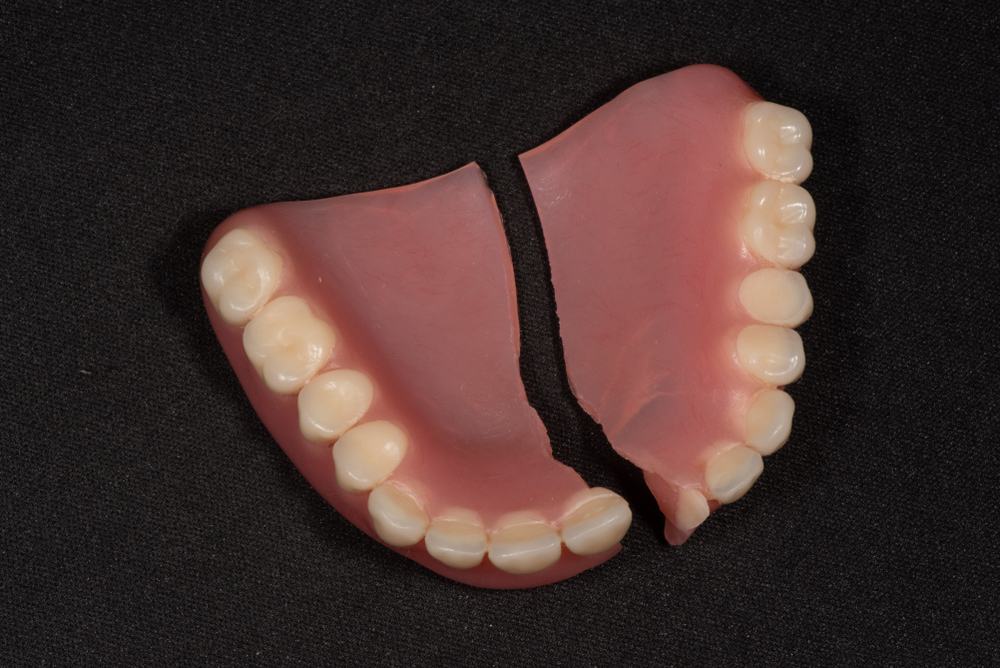
How to Fix Broken False Teeth at Home
We’ve all had those “oops” moments, or a dog who chews on expensive things. When it comes to dentures or false teeth, these moments can be a bit daunting. If you’ve found yourself searching for “How to fix broken false teeth at home,” it’s essential to tread with caution. While the idea of a quick DIY fix might seem appealing, the reality is that dentures and false teeth are crafted precisely for an individual’s mouth.
Repairing them on your own can compromise this precision. Improperly repaired false teeth might not fit right, leading to discomfort, sores, or even damage to your mouth. It can also affect your bite and lead to jaw problems. So, while you might find DIY kits online, it’s always best to turn to a professional for any repairs. They have the tools, materials, and expertise to ensure that your dentures fit and function as they should.
Best Glue for Broken False Teeth
Breaking your false teeth can be a genuine cause for panic, especially if you’re thinking about an upcoming social event or meeting. The initial thought might be to glue them back together, but here’s where it gets tricky.
Your average household glue or superglue is not safe for use in the mouth. These adhesives can introduce harmful chemicals, not to mention they aren’t designed to handle the conditions in the mouth, such as moisture and varying temperatures.
Instead, if you’re in a bind, you can consider special dental adhesive products available at drugstores. These are formulated to be safer for oral use and can offer a temporary fix until you can get to your dentist. Still, remember, they’re just a short-term solution. For a comfortable fit and to ensure the longevity of your false teeth, always get them professionally repaired.
In the world of false teeth, shortcuts can lead to more significant problems down the line. Always prioritize professional solutions over temporary fixes. After all, your smile deserves the best care possible.
Temporary Solutions to Hide Broken Teeth
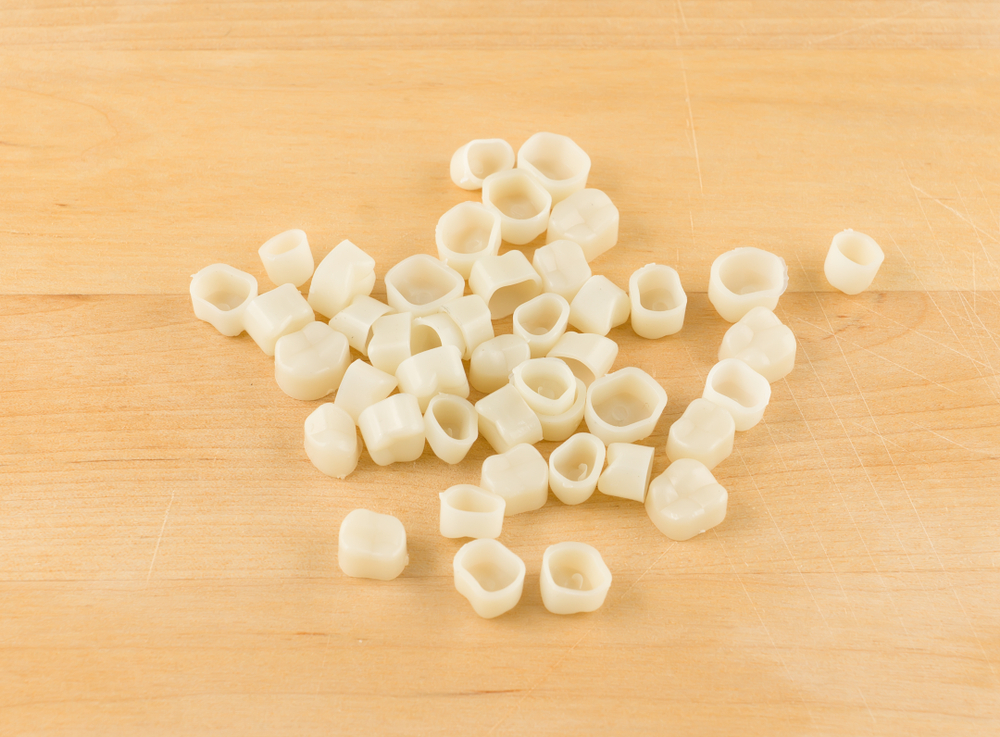
How to Cover Up Broken Teeth
We’ve all been there – an accidental chip or break in our teeth right before an important event. It’s natural to want a quick fix, even if it’s just for the aesthetics. One solution might be dental wax or over-the-counter tooth covers. They can help camouflage the broken area, giving a more polished appearance. However, it’s crucial to understand that these are mere temporary solutions. They won’t restore the tooth’s function or prevent potential complications from the break. So, while they can be a good short-term solution for a photo op or event, they aren’t a long-term answer.
Hide Broken Teeth
It’s understandable to feel self-conscious about a broken tooth. Temporary tooth covers or caps can be found online or in some stores. They’re designed to slide over your existing tooth, masking any imperfections. While they might provide a confidence boost for a day or two, they’re not meant for prolonged use. The pressure or misalignment they cause can lead to further dental issues. As always, a trip to the dentist is the best way to address the root of the problem (pun intended!).
The Myth of Natural Regrowth
In our age of home remedies and natural treatments, the concept of regrowing broken teeth naturally sounds appealing. Imagine if you could simply use a herbal concoction or change your diet to get back that perfect smile? However, the hard truth is that adult teeth, once lost or broken, don’t grow back.
Children’s milk teeth fall out to make way for their permanent adult teeth. But once those adult teeth are in place, there’s no natural mechanism for regrowth. The claims or suggestions you might find online about regrowing teeth are, unfortunately, myths.
For anyone searching for “how to regrow broken teeth naturally,” it’s essential to approach such information with skepticism. While some natural remedies can promote gum health or help with tooth sensitivity, they can’t bring back lost tooth material. Always rely on professional dental advice when dealing with broken or lost teeth.
The Risks of DIY Treatments

In our era of do-it-yourself solutions and online tutorials, it’s tempting to turn to the internet for everything, including dental care. But when it comes to your teeth, DIY approaches can come with considerable risks.
What Could Go Wrong?
Attempting to fix or treat dental problems at home might seem cost-effective or convenient. Still, without the right tools, knowledge, and sterilization methods, things can go awry. Here are some risks of DIY dental treatments:
- Infections: The mouth is home to a vast array of bacteria. Incorrect DIY treatments can introduce or spread infections, leading to more significant health problems.
- Improper Fixes: Using household items or non-professional methods to fix a broken tooth or filling can result in misalignments, affecting your bite and jaw health.
- Temporary Solutions, Bigger Problems: Even if a DIY fix seems to work initially, it’s likely just a Band-Aid on a bigger issue. Over time, the underlying problem can worsen, leading to more extensive and expensive treatments down the road.
- Complications: Without a thorough understanding of dental anatomy and health, it’s easy to make mistakes. You might damage healthy parts of your mouth or fail to address the root of the issue.
- False Sense of Security: Just because something feels better doesn’t mean it’s healed. DIY treatments can mask symptoms without addressing the underlying problem, delaying essential professional care.
Trust the Experts
While it’s admirable to want to take matters into your own hands, some things are best left to professionals. Dental health is one of them. Instead of searching “how to fix a chipped tooth at home” or “DIY tooth repair,” make an appointment with a dentist.
At Smile Science Dental Spa in Glendale, AZ, we value your smile and overall oral health. Dr. Richard Dawson and Dr. John Turke are equipped with the knowledge, tools, and experience to ensure you get the best treatment possible. Don’t gamble with DIY solutions—trust in the experts who have your best interests at heart. Your smile is worth it!


